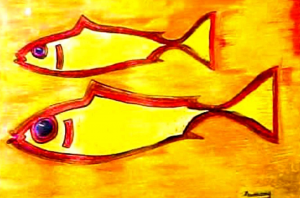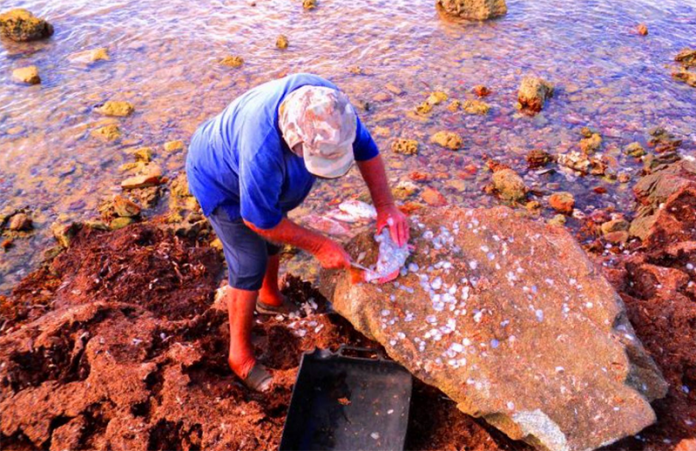Each week, Island Insight shares an Aruban story with you through the eyes of Etnia Nativa, who welcomes island visitors with an experience way beyond tourist attractions. We link readers with the mystical aspects of the island, its native culture, and its traditional heritage. In this episode, we elaborate on the fishing tradition of the island.
One of the activities beyond hunting that man had developed over thousands of years for subsistence purposes was fishing. Lakes, rivers, and the vast oceans offered an abundance of life-sustaining resources. When man arrived on these islands of the southwestern Caribbean, sea food of all kinds swarmed the shores.

Aruba is the closest of the ABC islands to the mainland. It offers a 360-degree view over the sea from many of its hilltops. Strombus horn blowers were quick to sound the alarm in case of a fire. Early detection and a vital sense of awareness could mean a lot.
The so-called Continental Bank between Aruba and the opposite coast reaches a depth of about 650 feet. The sea here was always very rich in fish. So since ancestral times, fish and a variety of sea creatures, including manatees, seals, sea turtles, squid, snails, oysters, crustaceans, sea bird eggs, and many types of algae, have formed a means of subsistence for the native inhabitants of Aruba, who relied heavily on the fruits provided by the sea.
The Arubans, like many other Windward Islanders, dedicated themselves from the end of the colonial era until the middle of the last century, mainly to coastal fishing. They were equipped with rowing boats, canoes, or small sailing boats. These were later provided with combustion engines. Boats were equipped with fresh water, pedals, harpoons, fishing gear, bait, long ropes, and as few anchors as possible. Fishermen also carried out their trade around the Monjes Islands to pick “bubi” eggs or to an area called Bajo, or shallow, off the opposite coast. Fishermen also used various types of nets and traps, like the “tarai” throwing reda, which is a bigger net that needs a team of people to handle, and the canasta, a trap that someone drops with some bait in it in shallow waters to be picked up in a few days.
Deep-bottom or seabed fishing was to catch red snapper and a variety of groupers like “jeanpao” or “wowo di boyo”. Fishermen did not generate much income in those days; however, fish was a great source of satisfying nutrition. The food par excellence of Aruba is fish accompanied by fried sweet plantain, cassava, beans, corn, and squashes.
Sometimes real giants were captured, “barracudas” that marked 20 pounds on the scale and measured between 3 and 7 feet long. While kingfish range in weight from 22 to 44 pounds, the grouper can tip the scales at 155, including “brazil,” “pamper,” “haldo,” and many more. Coastal fishermen to this day supply fresh fish to locals and restaurants. However, catches of the larger cutters brought to Aruba’s markets are part of a less fresh import supply as they remained in cold storage for some time. According to a rough estimate, there were about a hundred small professional fishing boats in the mid-1950s.
In Aruba and Curaçao, there were no facilities to preserve large quantities of fish for a few days. Until 1911, the first cold storage warehouse was built in Aruba, although with restricted capacity, it did its best.
The benefits of preserving the native culture are enormous, critical to keeping the island’s history alive, and essential to keeping our ancestral identity alive. We encourage you to check out the weekly educational online episodes through Island-Insight, written by Etnia Nativa, the more complete cultural blog, which will definitely show you Aruba from a different perspective.
If you are interested in connecting and really know all about your travel destination—our flora, fauna, geology, history, autochthonous art, as well as the true identity of the island—you should book a visit to Etnia Nativa, a unique native gem! Let Anthony, our acclaimed cultural columnist, guide and lecture you regarding the most interesting and revealing stories about Aruba’s undiscovered native ethnicity, an adventure beyond beaches and tourist traps. Visit his magnificent dwelling that integrates reused materials with nature, bursting with culture and island heritage! Whats App +297 592 2702 etnianativa03@gmail.com




















